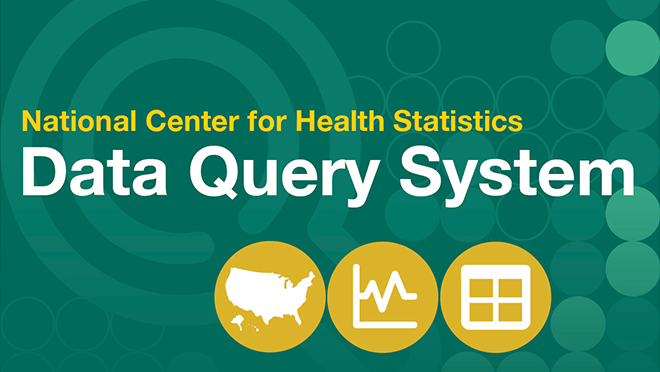At a glance
- The National Center for Health Statistics Data Query System features estimates of disability and functioning.
- These estimates are based on data from the National Health Interview Survey.

Functioning and disability
All topics on functioning and disability are based on the Washington Group Short Set on Functioning (WG-SS). The WG-SS identifies people who are at greater risk than the general population for experiencing restrictions in participation because of difficulties doing certain universal, basic actions.
The WG-SS is made up of six questions asking about difficulties in six functioning domains:
- Seeing (even if wearing glasses or contacts)
- Hearing (even if wearing hearing aids)
- Mobility (walking or climbing stairs)
- Communication (understanding or being understood by others)
- Cognition (remembering or concentrating)
- Self-care (such as washing all over or getting dressed)
Each of the WG-SS questions has four response options: no difficulty, some difficulty, a lot of difficulty, and cannot do at all.
Functioning difficulties (individual domains)
Get statistics from the NCHS Data Query System.
Sources
The National Health Interview Survey provides DQS with data about this topic from household interviews.
Any difficulty in the functioning domain is based on responses of "some difficulty," "a lot of difficulty," or "cannot do at all."
Disability status (composite)
Sources
The National Health Interview Survey (NHIS) provides the DQS with self-reported data on this topic from household interviews.
This composite indicator combines responses to all six functioning domain questions. Responses of "a lot of difficulty" or "cannot do at all" to at least one question are categorized as having disabilities.
Preliminary Data
DQS includes final data from NHIS. More recent preliminary data for this topic are available through the NHIS Early Release Program.
Functional difficulties (composite, three-level)
Get statistics from the NCHS Data Query System.
Sources
The National Health Interview Survey provides the DQS with about this topic from household interviews.
This three-level composite combines responses to all six functioning domain questions.
- Responses of "no difficulty" to all six domains are categorized as "No difficulties."
- Responses of "a lot of difficulty" or "cannot do at all" to at least one question are combined and categorized as "A lot of difficulties or cannot do at all."
- Remaining responses of "some difficulty" or "no difficulty" to at least one question are categorized as "Some difficulties."
